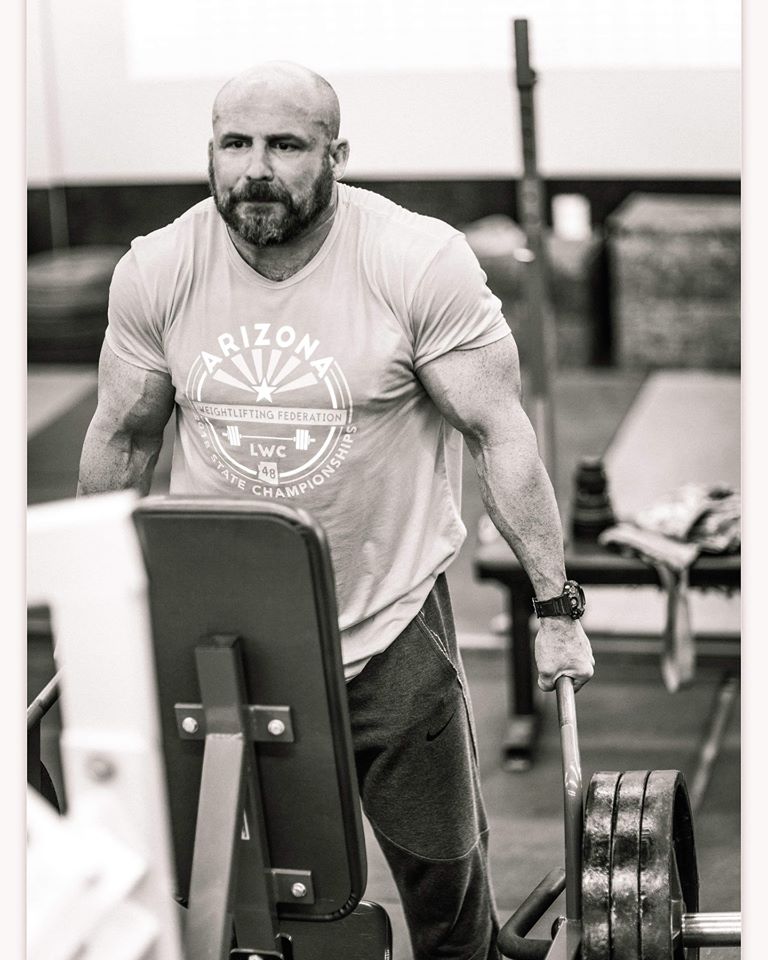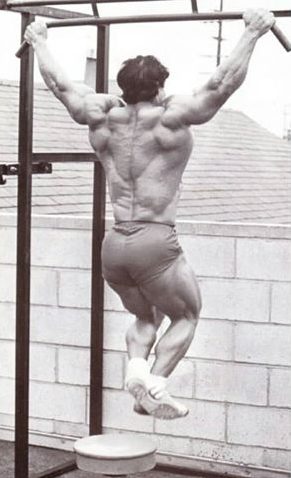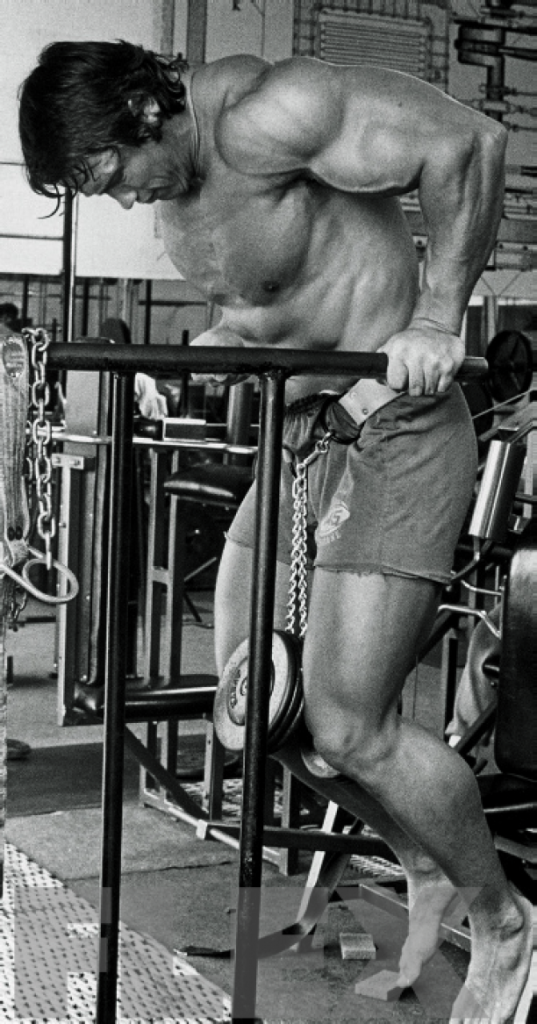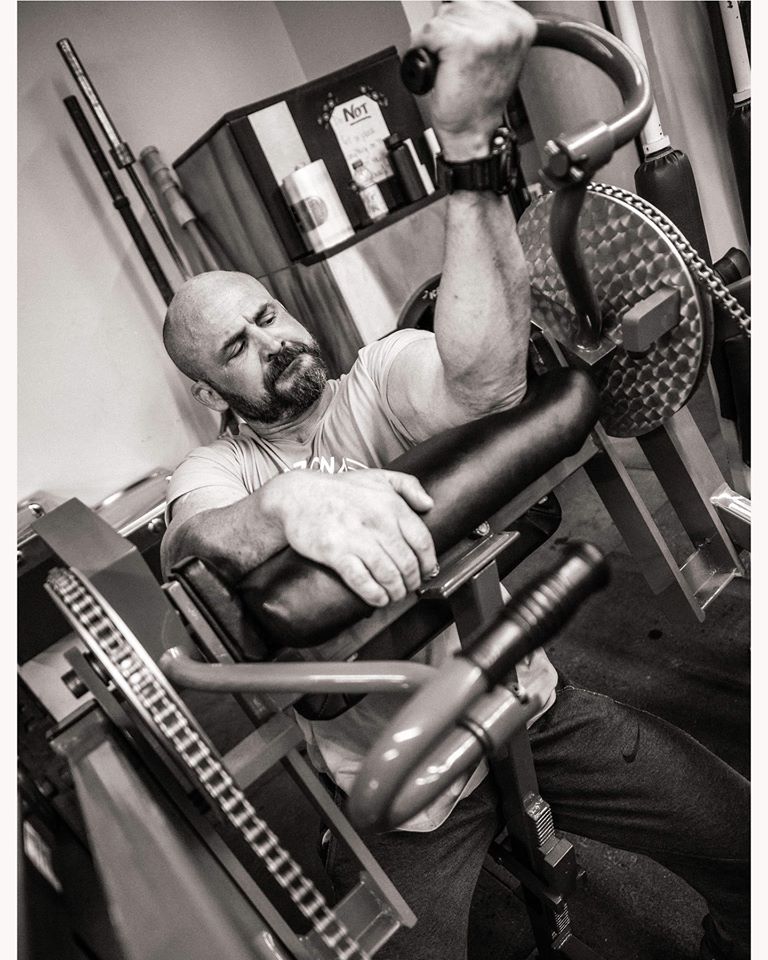
A Practical Guide to Hypertrophy
In the most basic terms, Hypertrophy refers to an increase in the size of a muscle. This increase in size is due to multiple factors, the most important of which are an increase in the size/number of the contractile elements and an increase in the volume of sarcoplasmic fluid within the muscle cell. Hypertrophy is often accompanied by an increase of strength. Increased strength is due to multiple factors: neurological adaptation, adaptation of connective tissue, and muscular hypertrophy.
Should you do hypertrophy work?
That depends on what your purpose for stimulating muscular hypertrophy is. In the case that you’re doing it for aesthetic reasons, do it however you’d like. If you’re training for sports performance, there are many considerations to take into account.
Will hypertrophy benefit your performance?
Hypertrophy can benefit performance in some sports and hurt performance in others. This all exists on a continuum. Bigger muscles allow for the generation of greater force and can serve to protect joints. On the other side of the issue, bigger muscles can also lead to slower movements, and they create a higher energy demand on the body. Bigger muscles require more oxygen, and it is fatiguing to carry extra weight.
Athletes in weight class sports must also weigh the cost benefit of carrying additional muscle. If the added weight pushes you into the next class up, you may cause more harm than good.
Types of Hypertrophy
Sarcoplasmic Hypertrophy
Sarcoplasmic Hypertrophy is defined by an increase in the amount of sarcoplasmic fluid that the muscle contains. Sarcoplasmic Hypertrophy is largely a result of metabolic stress induced during strength training. During this type of strength training, the muscle relies heavily on anaerobic glycolysis. Anaerobic glycolysis triggers hypertrophy in a couple of ways; the process of anaerobic glycolysis generates multiple by-products that trigger growth and leads to an increase in the amount of glycogen stored in muscles, which also draws additional water into the muscle.
Metabolically challenging strength training typically causes what is referred to as a “pump.” The “pump” is due to the increased blood flow into the muscle fed by arteries and decreased blood flow away from the muscle due to constriction of the veins. The pump may last for a couple of hours. During this time, the muscles are flush with nutrients, hormones, and other chemicals that signal growth. The pump contributes significantly to hypertrophy. In one of his training videos, bodybuilder Serge Nubret justified his high volume, high rep and short rest interval training on the grounds that the pump is what causes the muscle to grow. Serge wanted to maintain the biggest possible pump for as long as he could.
Sarcoplasmic Hypertrophy is associated with bodybuilding style training and isn’t as closely linked to strength gains as is Myofibrillar Hypertrophy. However, Sarcoplasmic Hypertrophy may serve as a foundation for the developing strength. The increased muscle size may serve as a foundation to build greater strength. Bigger muscles allow for greater potential strength.
Myofibrillar Hypertrophy
Myofibrillar Hypertrophy is primarily associated with strength gains and, to a lesser degree, increased muscular size. Myofibrillar Hypertrophy occurs when the muscle receives a signal to increase protein synthesis and produces, amongst other things, additional actin and myosin (contractile proteins). The addition of contractile proteins leads to an increase in strength and an increase in size of the muscle.
Myofibrillar Hypertrophy is stimulated through mechanical tension and stretch. That is why it is more closely associated with heavy, low rep strength training. Low repetition sets are primarily fueled by the phosphocreatine system.
During the initial stages of strength training (particularly low rep), a large portion of the body’s response is a neural adaptation. In other words, when beginning strength training, the body is learning how to perform specific movements efficiently. Following the initial neural adaptations, the body’s response shifts towards hypertrophy.
Causes of Hypertrophy
Stimulus that results in muscular hypertrophy exists on a continuum. For example, a subject in a detrained state may experience muscular hypertrophy from a much wider range of stimulus than a seasoned bodybuilder would. Starting from a detrained state, almost any type of resistance training will elicit muscle growth, whereas an experienced athlete may only experience a positive adaptation from very specific stimulus.
Stimulus should also be varied due to the principle of accommodation. This can be explained in terms of diminishing returns. In other words, each additional unit of similar stimulus results in less adaptation.
Metabolic Stress
Metabolic Stress occurs when the training stimulus requires a significant contribution from anaerobic glycolysis. This stress is seen predominantly during training that includes repeated sets of reps in the range of 6-12 followed by short rest periods of two minutes or less (in most cases less). The role of metabolic stress in sarcoplasmic hypertrophy has been reinforced by the observation of occlusion training. Occlusion training involves restricting circulation to a muscle during repeated contractions with low levels of resistance. Occlusion training has been demonstrated to result in hypertrophy levels similar to standard metabolic stress training. It is hypothesized that this is due to the body’s inability to clear the waste products that result from muscular contractions. It is hypothesized that the presence of the waste products play a significant role in signaling growth.
Mechanical Tension
Muscular tension is a result of a muscle contraction against a load or resistance. Tension clearly plays a significant role in stimulating hypertrophy and increased muscular strength. Tension signals an adaptive response that causes the affected muscle to increase myosin and actin in the muscle fiber, thereby creating increased capacity for muscular contraction. Muscular tension is most effectively generated by training at low rep ranges (1-5) with heavy loads and relatively long rest intervals (two minutes or more).
Muscle Damage
Muscle damage refers to microtrauma that occurs in muscles during contraction. These microtraumas trigger the muscle to replace tissue and create additional tissue in an attempt to protect the muscle from future damage. If the stimulus is imposed in an appropriate dose, the body has the capacity to repair the damage and become slightly stronger. This is why it is important to progressively overload muscles at a rate that they are capable of recovering from.
There is not a linear relationship between the degree to which the muscle is damaged and the resulting strength gain. Causing too much damage will not result in greater strength gains and may result in stagnation or injury.
The body adapts to the stimulus that it encounters. This is a key principle to consider during program design. Imposed stimulus must align with desired adaptations. This being the case, it is important to consider practical experience along with scientific research when deciding on a training methodology. Athletes in a particular sport have typically arrived at their training method through a combination of trial and error, along with application of scientific research. The generally accepted principles should be given strong consideration. The practitioners may not entirely understand why a particular method works, but through years of experience, they have discovered which methods produce the desired results.
Individual considerations
A constellation of factors contribute to the response that an individual gets from training. Two people can complete the same training protocol and come away with very different results. The following are some of the factors that play a role in individual response to training.
Hormones
Hormones play a massive role in the body’s response to training. In fact, they play a significant role in how we look, act, and feel. That being said, we all have different naturally occurring levels of hormones. People with a favorable hormonal environment are much more likely to have a positive response to training. This results from genetic predisposition, lifestyle factors, and the introduction of exogenous hormones. This is a complex and controversial subject which lands outside the scope of this article.
Predominant Muscle Fiber Type
There are multiple types of muscle fibers. Each has a favorable predisposition towards the performance of particular tasks. At the most basic levels, muscle fibers can be divided into two categories: fast twitch and slow twitch. There are subcategories within these two. Additionally, muscle fibers can transition between the two based on imposed demands. This was illustrated in research that biopsied the muscle fibers of identical twins. One was sedentary, and the other was a long-term endurance athlete. The sedentary twin had a relatively even split between fast and slow twitch fibers, while the endurance athlete had predominantly slow twitch fibers. Fiber type is an important factor in hypertrophy. Fast twitch fibers have a higher potential for increases in size.
Resources
In order for hypertrophy to occur, the body must have adequate nutritional resources and rest. Training is the stimulus, after which the body needs time and nutrients in order to respond with a positive adaptation. Nutrition is a key component in the process of muscle hypertrophy. Muscle growth requires protein, amongst other nutrients. Research has been done where scientists were able to stimulate muscular hypertrophy at a calorie deficit, but this isn’t sustainable and may only be possible in the case of localized hypertrophy in response to specific demands. The experiment that illustrates this was done by severing one of the muscles in the lower legs of rats. The rats were then run on a treadmill while at calorie deficit. The still functioning muscle of the lower leg did hypertrophy in response to the stimulus. This is more likely an example of the body’s ability to prioritize resources and adapt to the demands of a specific situation. The simplest way to ensure the body has adequate nutritional resources in order to sustain hypertrophy is to maintain a positive calorie balance (eat more than you burn).
Drains on Resources
When training for hypertrophy, it is important to prioritize the training intended to specifically induce growth. This translates into avoiding activities that elicit a contrary response or that deplete resources needed for growth. Long steady-state training is typically considered counterproductive when training for hypertrophy for a couple of reasons. First, it is a drain on resources that could otherwise be used for hypertrophy and second, long steady-state training signals the body to undergo an adaptation that is contrary to growth. Endurance exercise signals the body to decrease the cross sectional size of muscle fiber and it signals the body to convert to slow twitch fibers, which have a much lower potential for growth.
Endurance exercise signals mitochondria growth instead of muscle hypertrophy. This is great if you’re attempting to increase your endurance, but it’s not effective if the goal is muscular hypertrophy. If you intend to engage in steady state training while training for hypertrophy, it is advisable to complete them in separate training sessions. This will allow the body to respond to one set of adaptation signals at a time.
Several Approaches to Stimulating Hypertrophy
There are multiple philosophies on the type of training that is the most effective means of stimulating muscular hypertrophy. The following are several of the predominant philosophies. They have all produced significant results and which is the most effective is still open for debate. One factor in determining which method is the most effective is the individual’s genetic makeup. Different people respond in different ways to similar training.
High Intensity Training (low volume)
H.I.T. was promoted by Arthur Jones, the inventor of Nautilus Machines, and later expanded on by Mike Mentzer with his “Heavy Duty” system. The hypothesis goes that the body hypertrophies in response to a single bout of high intensity stimulus. Hypertrophy is limited by magnitude of stimulus and availability of resources available to produce growth. Jones described this as the body’s “recovery ability,” thus the importance of low volume training. Once the growth mechanism is triggered, any additional work is limiting growth by consuming resources that would be otherwise allocated to recovery ability. The “growth mechanism” hypothesis of hypertrophy leads practitioners to seek the highest intensity and lowest volume training, required to stimulate hypertrophy. The focus is on eccentric, low volume, infrequent training.
Pump
This is the approach employed by many bodybuilders and causes a significant change in muscle size, less of an increase in strength. Serge Nubret explained this approach as a justification for his training style. His method involved repeated sets of 12-15 reps with short rest periods. He believed that this pumped the most blood to the muscles for the longest period of time, which provided the nutrients needed for growth.
Strength
Repeated bouts of submaximal, low rep sets, using relatively heavy loads. This type of training causes less of a pump and less of an increase in muscle fiber cross section. An example of this type of training is a 5×5 approach to training. This can be performed by using the same weight for 5 sets of 5 repetitions. Strength training is an important component in developing maximal hypertrophy. Additional strength allows for heavier work to be done in the higher rep ranges, creating a more potent stimulus, leading to more hypertrophy.
Which Method Should You Use?
There are relatively few athletes who have adhered exclusively to one training methodology for the entirety of their training career. This being the case, it is difficult to know which system to attribute their muscular development to. It is probably beneficial to use multiple training methods over time as a means of varying stimulus. It may be most effective to develop a good base of work capacity and strength prior to transitioning to a H.I.T. style of training. Novice lifters often won’t be able to generate adequate intensity to get the greatest benefit from a low volume, high intensity style of training.
Training Suggestions
A range of stimuli can increase the volume of muscle cells. These changes occur as an adaptive response that serves to increase the ability to generate force or resist fatigue in anaerobic conditions.
The guidelines presented in this article are not set in stone and results may vary from individual to individual. The intent is to establish general parameters to aid in the design of training programs with the intent of stimulating hypertrophy. No method will render immediate results. Adaptation is the slow process of coaxing the body towards a desired change. Stimulus must be increased slowly and in a progressive manner. Inappropriate levels of stimulus may lead to stagnation or injury.
- Focus on movement quality. No sloppy reps.
- The most effective rep range is 6-12 (slightly higher for lower body).
- Training volume should decrease as intensity increases.
- Vary your methods. Incorporate different rep ranges and movement tempos.
- Go to failure occasionally. It is probably most effective to limit instances of going to failure, particularly on compound movements.
MU Motor Unit
Employ training methods that result in the recruitment of the greatest number of motor units possible. This can be achieved through load or fatigue. The greater the stressor, the more motor units required to be activated in order to overcome the load.
Number of Reps (neurological vs. metabolic)
A variety of rep ranges will lead to hypertrophy to one degree or another. It is generally accepted that the most effective rep range in terms of stimulating hypertrophy is 6-12. Reps outside of that range can also be helpful in stimulating hypertrophy. For example, strength work in lower rep ranges can be used to build greater strength, which will in turn allow for higher loads to be used in the 6-12 rep range, resulting in a more potent stimulus for hypertrophy. Higher reps can also be useful in terms of developing hypertrophy for reasons which include training for muscle pump and increasing muscular endurance which will result in the ability to perform more work within the 6-12 rep range.
Intensity
In terms of the field of strength and conditioning, intensity refers to the percentage of one-rep max represented by a particular load. Depending on which training philosophy you adhere to, load can have varying degrees of importance in the attempt to stimulate hypertrophy. Proponents of a H.I.T. approach typically place significant emphasis on using as heavy a load as possible for the desired number of reps. Proponents of the pump method tend to deemphasize the importance of load and prioritize repeated sets of relatively high weights at a moderate intensity with short rest periods. Both can be effective for stimulating hypertrophy. A pump approach may result in fewer injuries and better longevity.
Volume
High and low volume training have both been used to effectively stimulate significant hypertrophy. Generally, if you train at a higher intensity, you will need to train at a lower volume and less frequently.
Rest Intervals
When training for hypertrophy, rest intervals should be kept relatively short: two minutes or less. This doesn’t mean you can’t stimulate hypertrophy with longer rests; it just means that most of your work should be performed with short rest intervals. Proponents of the pump method of training often emphasize rest periods of thirty seconds or less. Focus on moving quickly between exercises. This increases the systemic stress of training and leads to greater pump.
Exercise Variation
Varying exercises used to train a particular muscle group is also an effective way to change stimulus and thereby cause the muscle to work harder or in an unfamiliar way. This is important over the long term because it helps to avoid accommodation or a decrease in the effectiveness of a stimulus. Over time, what was once a novel stimulus becomes ordinary.
Angle of Exercise
When performing an exercise, the muscle fibers in the most efficient position to execute a movement are likely to be the fibers fired. An incline bench will tend to engage muscle fibers at the top of the chest. The most efficient fibers to perform the work are going to be a result of tension across the muscle. The muscles receiving the most tension will be the most likely to fire. All part of the body’s sensory system, much like the Golgi organ that shuts down a muscle contraction when force becomes dangerously high.
Movement Tempo
This refers to the speed at which a movement is performed. Tempo is typically noted in terms of time required to complete each phase of a lift. The phases of primary concern are the eccentric (lengthening of the muscle) and the concentric (shortening of the muscle). Tempo can be manipulated in order to change the stimulus resulting from an exercise and is an important component in the stimulation of hypertrophy. On the most basic level, tempo should be controlled throughout the range of the motion. It appears that controlling the tempo of the eccentric phase is particularly important when hypertrophy is the objective. The concentric phase should be adequately controlled to prevent the deloading of the muscle due to momentum.
Eccentric
The eccentric portion of a lift is the phase in which the muscle is lengthening under tension. For example, in the bench press, the eccentric phase occurs when lowering the bar to the chest. Prioritizing the tempo of the eccentric phase of a lift is of significant importance in the stimulation of hypertrophy. This may be due to the greater degree of muscle damage inherent in the nature of the process of actin and myosin sliding past each other during the lengthening of the muscle. It is also important to note that muscles are more capable of handling heavier loads during the eccentric phase of a lift than they are during the concentric phase. This discrepancy tends to fall somewhere around a 40% difference. Arthur Jones hypothesized that this was due to the friction resulting from the components of the muscle sliding past each other during muscular lengthening. This has led some to pursue training protocols that are predominantly concerned with training the eccentric phase of the lift. The thought being that larger loads equal greater stimulus, which should result in greater hypertrophy. This is accurate to a degree, but excessive heavy eccentric work can quickly become to great a stimulus and outpace the body’s ability to adapt.
Time Under Tension
Time under tension, along with the magnitude of tension, also play an important role in signaling the muscle to respond with hypertrophy. Duration of tension and magnitude of tension will rise in a linear fashion for a short period of time before diverging. Maximal force isn’t generated instantaneously, nor can it be sustained indefinitely. The target for time under tension should typically be thirty seconds to one minute. Some research has shown an optimal amount of time under tension to be thirty-six seconds.
Exercise Frequency
This is another hotly debated subject. Proponents of H.I.T. profess the importance of infrequent training in order to allow the body to completely recover and to avoid wasting the body’s limited ability to recover. Advocates of the pump approach often recommend training a muscle multiple times in the same week (2-3). Both can be effective, ultimately the intensity and volume of work will play a significant role in determining time required to adequately recover from training. Submaximal efforts can be repeated more often than maximal efforts.
Progressive Overload
Systematically increasing the stimulus imposed on a muscle is generally accepted as necessary to stimulate hypertrophy. In the case that the body has sufficient adaptation to respond to a particular stimulus, there is no need for further adaptation. Stimulus can be progressed by manipulating a multitude of variables, load, reps, sets, rest intervals, preceding exercises, movement tempo, etc.
Range of Motion
Range of motion is a variable that has been experimented with in many ways. Some have tried overstretching muscle, while others have used partial movements for higher than typical loads or reps. Over stretching, partial movements, and isometric movements may all have a place in stimulating hypertrophy, but ultimately most exercise should take place within a complete range of motion with loads that can be controlled throughout the movement.
Mind/Muscle Connection
In other words, your focus on and connection to the muscle being worked. This has been given almost mythical power in the world of bodybuilding, and there may be something to it. At the very least, it is important to be focused on the quality of movement while performing and exercise. Quality movement ensures that the muscle is being thoroughly worked and it increases the safety of a movement. Lack of focus will lead to less in the way of progress.
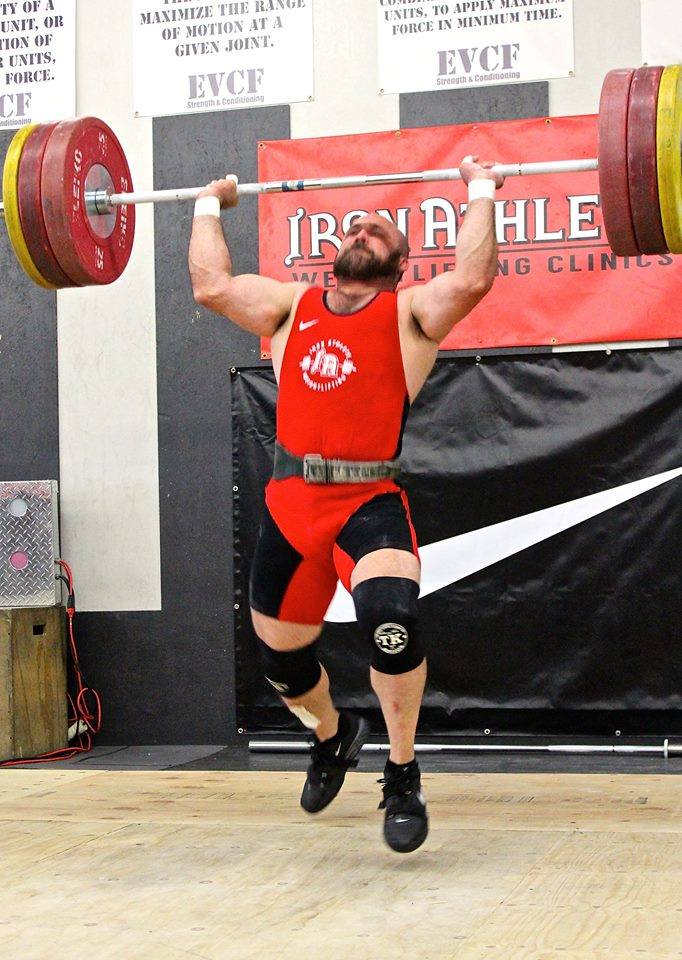
-Bachelor of Science, Auburn University 1997
-Master of Education, Northern Arizona University 2005
-USA Weightlifting Club Coach 2001
-CrossFit Level 1 Instructor 2009
-USA Weightlifting National Coach 2012
-EVCF Regional Team Coach 2013, 2014, 2015, 2016, 2017,2018
-EVCF CrossFit Games Team Coach 2014
-Coach CrossFit Games Masters Athlete (Bruce Briggs) 2018
-Masters National Record Holder: Snatch 130kg & Total 287kg (105kg 40-44)
-5 x American Masters Weightlifting Champion
-5 x American Masters – Best Lifter (2 x 35-39yrs, 3 x 40-44yrs)
-3 x Masters Nationals Weightlifting Runner-up
-President of Arizona Weightlifting Federation – LWC 48, 2016-current
